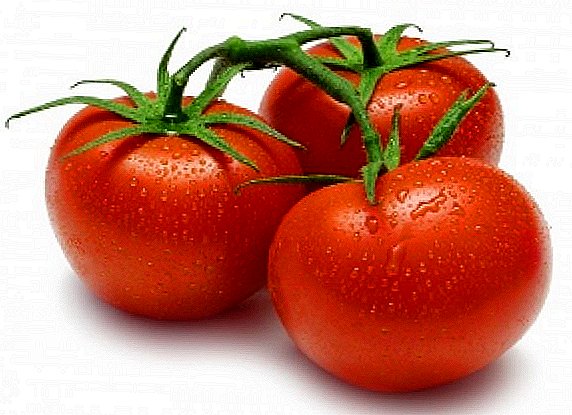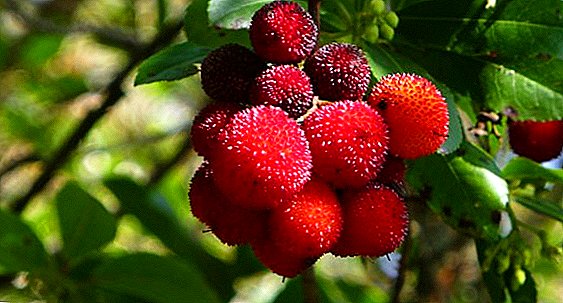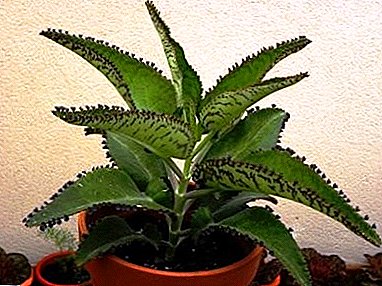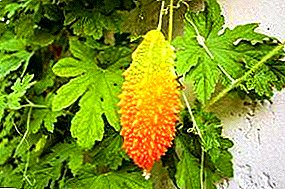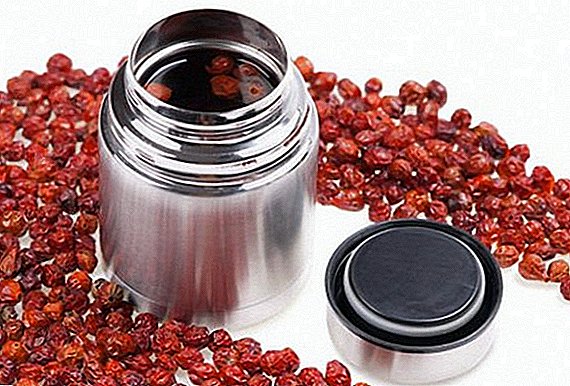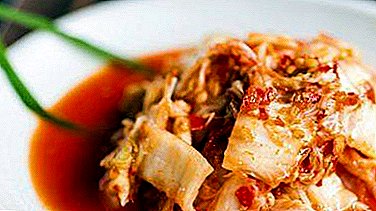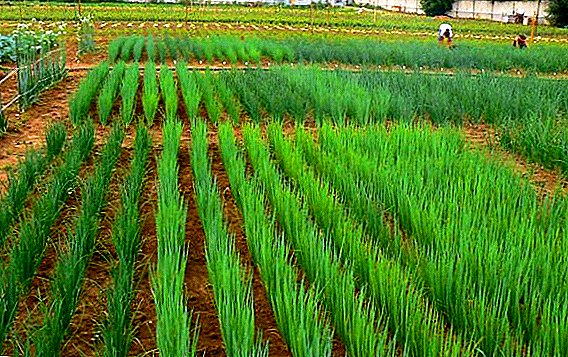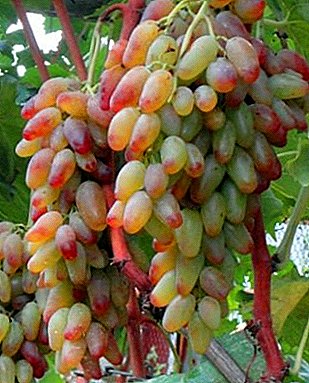
Nowadays, more and more gardeners prefer growing grapes. It is often chosen to decorate the suburban area.
The plant very harmoniously transforms arbors, benches, terraces of the house. It makes beautiful hedges.
From berries prepare a variety of homemade dishes: jam, jams, compotes, wine, pastries.
If you decide to plant this crop on your plot and do not know which variety to give preference, pay attention to the Zagrava grapes.
It is also called the New Original. It is particularly popular for its simple care, taste and decorative qualities.
What kind is it?
Overgrazing refers to the table hybrid type of grapes with a mid-ripening period of berries. To the table hybrids belong also the Dawn of Nesvetaya, Aladdin and Karmakod.
Crop begin to take off after 135-145 days from the time of the first buds blooming. In the central and northern regions after 145-155 days.
Grapes Zagrava: variety description

- Zagrava bushes are characterized by enhanced growth, strong thin branches, massive trunk.
The leaves are large, saturated green color with yellow veins, toothed along the edges. Flower bisexual.
- Clusters of regular conical shape, medium density, large. The average weight of the vine is 600-800 grams.
You can get larger clusters, if the plant is well cared for, regularly fed and watered.
Distinctive feature of Zagrava - berries ripen without pea! - The berries are white-pink, elongated-ovoid (papillary) shape. The average size of the berries is 33-35 x 23-26 mm., 8-11 grams each.
- The pulp has a pleasant harmonious taste, sweet, crunchy, the skin is thin. Zagrava has a high sugar accumulation. Ripe berries contain up to 22-23% sugar with an acidity of 6 g / l.
- Most often, grapes are grown for consumption in unchanged fresh. Suitable for sales and cooking of various homemade dishes (jams, salads, jam).
High sugar content can also boast White Delight, King Ruby and Queen of Grapes.
A photo
Photo grapes "Zagrava":





Breeding history and breeding region
Zagrava was obtained as a result of crossing the Original and Kobzar varieties.
The work was carried out by breeders in the UNIIViV them. Tairov.
The variety has been successfully tested and is currently grown in different regions of Ukraine, as well as in Belarus and Russia, and, today, it is found quite often.
Care and storage
- Bushes of a grade plentifully fructify and bring annual crops. The vine matures well. The gardener should pay attention to the timely thinning of the grapes to prevent overloading. Among the high-yielding varieties worth paying attention to the anniversary of the Kherson summer resident, the Gift of Magarach and Rkatsiteli.
Without this procedure, the plant will not have enough strength to withstand such a number of berries and the branches will begin to break under their weight. Without thinning the plant may also not have enough strength to fully ripen the berries.
The optimal load on the bush - 35-40 eyes. Pruning of the vine can be medium (6-8 eyes) or short (4 eyes).
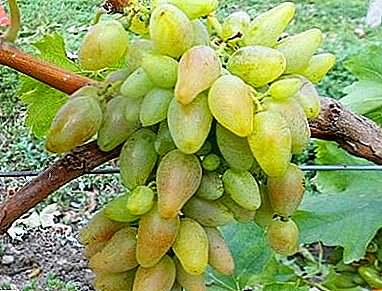 There are practically no problems with reproduction and transplantation. Rooting rate is good. Annual shoots ripen intensively and quickly.
There are practically no problems with reproduction and transplantation. Rooting rate is good. Annual shoots ripen intensively and quickly.Observations of winegrowers showed that the fruitful shoots of this variety is about 60-70%, the coefficient of fruiting is 0.5, and the fruitfulness is 1.2.
- Zagrava has good frost resistance and can withstand temperature drops up to -15 -22 degrees. At the same time in areas where the temperature in winter does not fall below -15 grapes can not be covered. Among the cold-resistant varieties are particularly good Pink Flamingo, Beauty of the North and Super Extra.
When growing in our strip gardener must take care of a reliable shelter. Work this begin after 10 October.
Vine bunches are tied and laid on the ground, covered with a thick layer of soil. Some winegrowers first wrap the grapes in sackcloth, and then covered with earth.
You can make a shelter from dense wooden shields with a thickness of 20-30 mm. Spread ruberoid or plastic wrap over it. The more secure the shelter, the better the bushes will survive the frosty winter.
- Zagrava, like other middle-late varieties, has a long shelf life. If the crop is properly harvested and storage conditions are kept, the berries may lie until the New Year holidays. The same shelf life is demonstrated by Lily of the Valley, Rosemus and Attica.
It is only necessary to remove the clusters from the bush in warm and dry weather. Berries can be placed in wooden boxes and stored in a cool cellar with air temperatures from 0 to 5 degrees and humidity not higher than 80%. You can hang the grapes on a rope or wire and store in the attic;
- When growing a variety, pay attention to the fact that Zagrava requires a sufficient area of food with an abundant supply of old wood;
- When growing grapes, gardeners are sometimes faced with the fact that the berries ripen faded and not as saturated as expected. This can be easily remedied by thinning the leaves around the bunches.
Diseases and pests
The variety is characterized by moderate resistance to pests and diseases. Resistance to mildew, gray rot and oidium is about 2.5-3 points. To protect the grapes, the grower must pay attention to preventive measures.
- Every year it is recommended to carry out preventive treatment with chemicals;
- Zagrava is rarely affected by wasps, it is better to reduce the risk of a problem.
Destroy wasp nests in the area and near it in due time. Wrapping each bunch in special mesh bags helps insects well.
By the way, this method also protects against birds. Sparrows, tits and other birds often love to eat fresh berry juice. Each time they peck at one berry after another, causing irreparable damage to the crop. - Be sure to take care of the soil around the bushes: fertilize, water abundantly, often loosen the ground, in a timely manner destroy the old leaves and berries that fell from the branches.
Poor care can cause illness. Old foliage often becomes a breeding ground for dangerous insects.
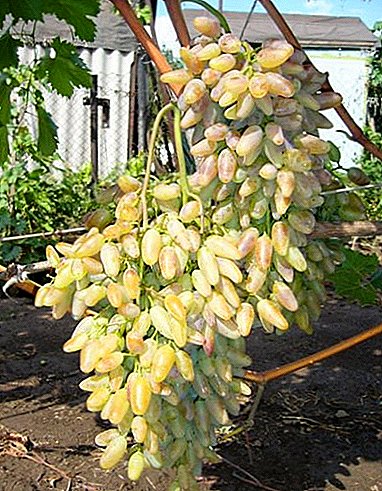 Twice a year, pay attention to pruning grapes.
Twice a year, pay attention to pruning grapes.
It also does not hurt to take certain preventive measures against such common grape diseases as chlorosis, anthracnose, bacteriosis, rubella and bacterial cancer.
Zagrava has long attracted the attention of many gardeners. The main advantages of the variety: simple care, long shelf life, good taste, large berries and clusters, as well as an abundant annual harvest.
The disadvantages include average frost resistance. Grapes are rarely grown in the northern regions, as it belongs to the mid-late variety and berries often do not have time to fully ripen until autumn.
The same terms of ripening differ Regent, Annie and Original.
The gardener must pay attention to preventive measures against diseases and pests to reduce the risk of problems with growing grapes.


 There are practically no problems with reproduction and transplantation. Rooting rate is good. Annual shoots ripen intensively and quickly.
There are practically no problems with reproduction and transplantation. Rooting rate is good. Annual shoots ripen intensively and quickly. Twice a year, pay attention to pruning grapes.
Twice a year, pay attention to pruning grapes.
